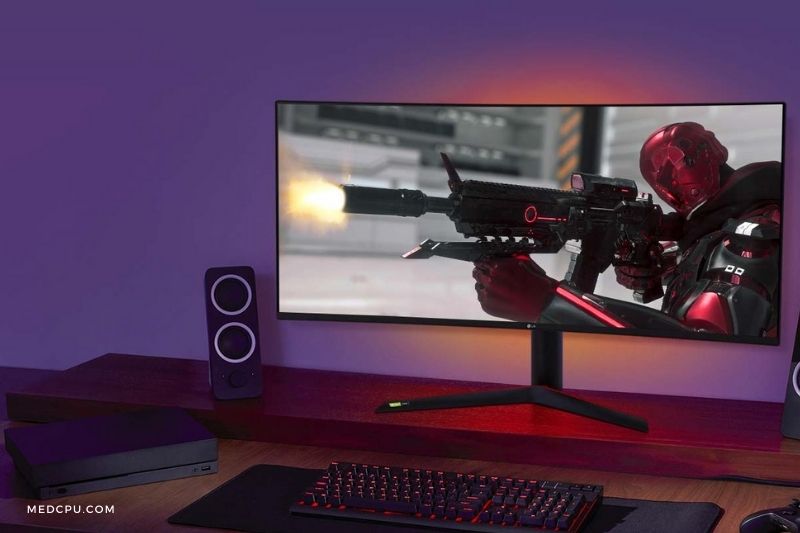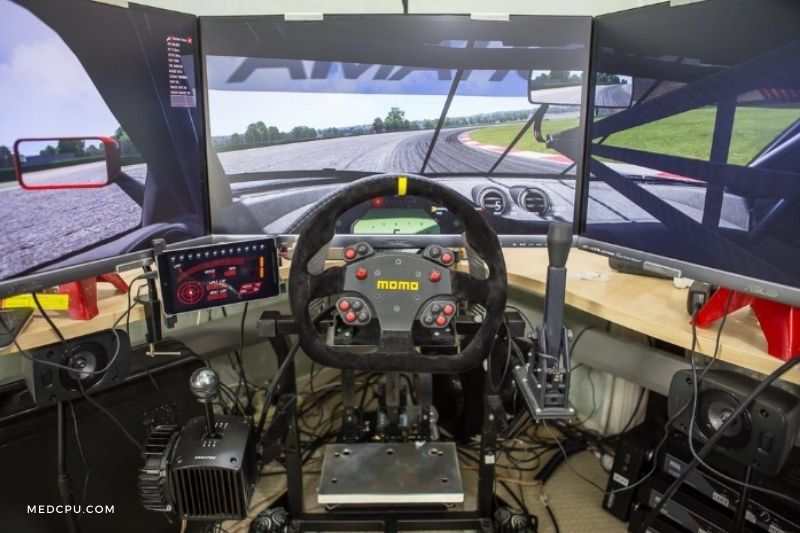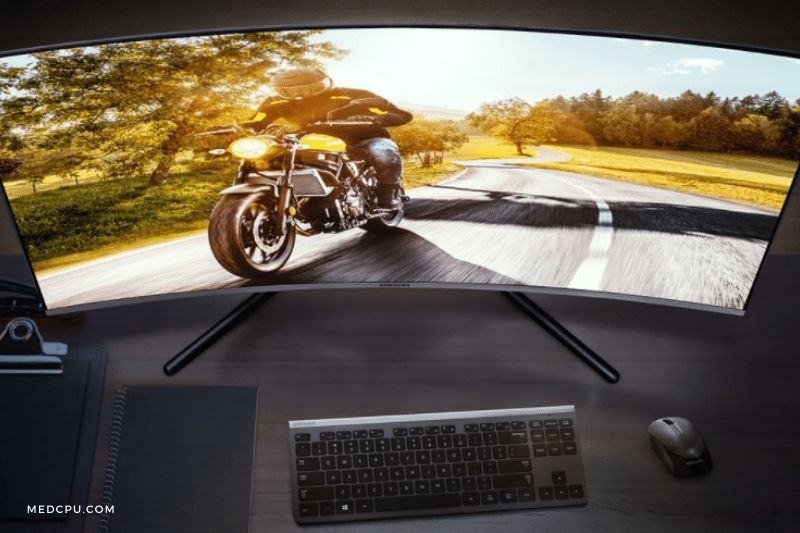When it comes to buying a high refresh rate gaming monitor, you have to choose between 144hz and 240hz. The refresh rate in the monitor is in effect for each frame that is being displayed to the user. This is different from the frame rate in video games which is only in effect while the game is being played.
How do you decide whether or not to buy a higher-end monitor? So, you’re deciding between buying a 144hz vs 240hz monitor. Let’s compare!
What are Refresh Rates?
A display’s refresh rate is how often it can refresh the image displayed on it. A refresh rate monitor of 60Hz refreshes the image 60 times per second, for instance.
This also affects the number of frames per second that a monitor can display. A monitor can display as many frames per second as the refresh rate of its monitor allows, but your graphics card might be capable of rendering more than 100 frames. Most often, this will be 60.
What is the importance of Hz for gaming?
There are several reasons why Hz is important. The higher the Hz, the clearer and more detailed your display will look. There will also be less blurring. Blurring is caused by the way our brains process individual frames on a monitor screen. Our brains blur these frames together to create a coherent moving picture. However, some details may be lost.
You can increase your Hz to reduce blur. This happens because our brains have more information to process and less blur. This allows gamers to aim and track more accurately, particularly in first-person shooter games. This improves overall gameplay and gives you an advantage over players who have slower frames per second and Hz.
Be aware that some people get motion sickness or headaches from playing at higher Hz. Your eyes will adjust to the additional information, which can make gaming more difficult for some people.
Check our link to know if Curved Monitors Good for Gaming or not: https://medcpu.com/are-curved-monitors-good-for-gaming/
Difference Between 144Hz Vs 240Hz Monitor – A Quick Comparison
A GPU that can output frames at the same speed as your monitor’s refresh rate (144Hz for monitor + 144 FPS for GPU) is the best idea to make use of a monitor with a higher hertz.
The difference in gaming responsiveness was noticeable when people switched from 60Hz to 64Hz. Although the jump from 144Hz – 240Hz is not perceptible to the eye, it can be seen in gaming due to its lower latency.
Gaming on a 240Hz screen with a lower-spec GPU could be considered excessive, and you might be better off upgrading to a higher-spec card. A 240Hz screen is an excellent addition to your setup if you’re able to output 240 frames per second for your favorite games.
G-SYNC/FreeSync
G-SYNC and FreeSync are pieces that make up the difference between the monitor’s refresh rate and the GPU’s output frames rate. Screen-tearing is a problem that G-SYNC solves. Sometimes, input lags can be caused by using a G-SYNC.
The input lag should not be noticeable if the monitor is 240Hz. A G-SYNC can significantly reduce screen tearing and provide a smoother gaming experience with a 240Hz monitor.
Gaming Performance

To ensure that your monitor can run high-quality gaming, there are some prerequisites.
1. Competitive Gaming
Higher refresh rates result in images being updated more often. This allows for smoother transitions between images and a more enjoyable visual experience. It also results in more excellent responsiveness.
With more complex games, especially competitive games, the differences between 144Hz-240Hz gaming monitors become more obvious. A 240Hz monitor would be the perfect choice for professional gamers.
2. Multiplayer Gaming
A 144Hz monitor is a minimum requirement for regular multiplayer gaming. This one will provide you with a smooth experience in casual multiplayer gaming. It can also last many years. If you are looking for casual gaming, then 144Hz gaming monitors might be the best choice.
3. Simulation-based Gaming
Simulated Gaming is a type of gaming that is played slowly. A monitor with 60Hz is sufficient for these types of gaming. These leisure gamers often invest in additional PC parts such as to monitor resolutions. Which one is better, the 1440p 144Hz or 1080p 24Hz gaming monitors? Of course, the former!
See also What To Look For In A Gaming Monitor: https://medcpu.com/what-to-look-for-in-a-gaming-monitor/
Graphics Card
A GPU that can output frames at the same speed as your monitor’s refresh rate (144Hz for monitor + 144 FPS for GPU) is often recommended in order to benefit from a higher hertz monitor.
The difference in gaming responsiveness was evident when people switched from 60Hz to 144Hz. Although the jump from 144Hz – 240Hz is not perceptible to the eye, it can be seen in gaming due to its lower latency.
Gaming on a 240Hz screen with a lower-spec GPU could be considered excessive and you might be better off upgrading to a higher-spec card. A 240Hz monitor is the best addition to your setup if you’re able to output 240 frames per second for your favorite games.
Cost
A 240Hz monitor is more expensive than a monitor with a 144Hz resolution. This monitor offers better visual performance and responsiveness. It is more expensive because it has a higher refresh rate that controls the number of frames per second.
While you may enjoy additional benefits due to the faster refresh rate, it is possible that your computer will not be capable of handling the update. It could result in you spending a lot of money. You would undoubtedly want to achieve the target performance.
It was also evident that 60Hz monitors were used more, resulting in huge differences between the 60Hz and 144Hz monitors. This is not the case with the 144Hz or 240Hz monitors. The screens are almost identical in smoothness.
A 240hz monitor will be more affordable if you aren’t looking for professional gaming. Think about the purpose of the purchase.
See our list of the Best Gaming Laptop Under 1500 in 2021: https://medcpu.com/best-gaming-laptop-under-1500/
FAQs

Can the human eye see 240Hz?
The human eye can’t see a screen with a 240 Hz refresh rate – a screen running at a 240 Hz refresh rate displays video frames 240 times per second.
In general, the human eye sees images as a series of still images displayed in rapid succession to create the illusion of movement. 240Hz, on the other hand, is too high a frame rate for your eye to perceive as anything other than an artificial image that may look more fluid and smooth but isn’t as alive as a 60hz display.
Is buying a 240Hz Monitor overkill?
Some people think that buying a 240Hz monitor is overkill. These are high-end monitors that are much more expensive than the standard ones which are usually 60Hz.
If you are looking for a monitor that is best for gaming, then it may be worth the investment, but if you are just an average person who is looking for a monitor, then it may not be the best option.
Conclusion
Both monitors are great for gaming. Their lightning-fast refresh rates will eliminate blurry motion and make gameplay much more crisp and realistic.
The difference between them is that 240hz monitors can run at a higher refresh rate while 144hz monitors can’t. This is the perfect solution for gamers who are on a budget, while users with higher-end gaming computers can make due with a 144hz monitor. So, if you’re looking for the best possible gaming experience, don’t hesitate to go for a monitor with 240Hz resolution.
Thanks for reading our guide. We hope this article was helpful to you!
Video:

Eyal Ephrat serves as the co-founder and CEO of medCPU.com, where technology is making significant strides in the field of medicine. Through his experience in purchasing PC and laptop equipment and various other tech products, Eyal Ephrat contributes valuable insights to medCPU’s mission.

